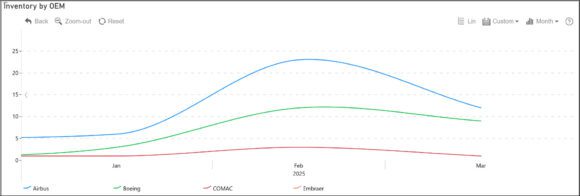Last night, US east coast time, the C919 had a second recorded test flight. It was 2:46 which is more than double the first recorded flight at 1:07. As the map shows, it did not fly too far from its Shanghai base.
 In terms of its flight profile, see below. The aircraft was pretty stable altitude wise, staying about 10,000 feet, and experimented with speed.
In terms of its flight profile, see below. The aircraft was pretty stable altitude wise, staying about 10,000 feet, and experimented with speed.
 This is a more conservative flight profile than we saw earlier this week with the MC-21. The Russian aircraft appears to be moving through its flight test program much more quickly.
This is a more conservative flight profile than we saw earlier this week with the MC-21. The Russian aircraft appears to be moving through its flight test program much more quickly.
Views: 0





Hello
The speed and altitude graph shows that the intent of the flight was to test the performance of the high lift device. While maintening a constant altitude and still manoevering complex pattern at 10 000 feet the high lift devices such as slats and slots were actioned to increase or decressed drag but maintaining required lift to maintain the aircraft à constant altitude.
The same is likely to be repeated à different altitude from low altitude ,1000 meters, to maximum operational altitude, 11000 meters to verify the proper design and control of these important devices as well as software that controls those devices.
Though the aircraft was able to maintain a constant altitude during complex manoevering as the map is showing, speed variations were excessive, unpredictable and erratic indicating that high lift device positioning sensors needed a better calibration to provide proper feedback and response to control software.
It is essential that these features be corrected for proper aircraft operation and further testing.